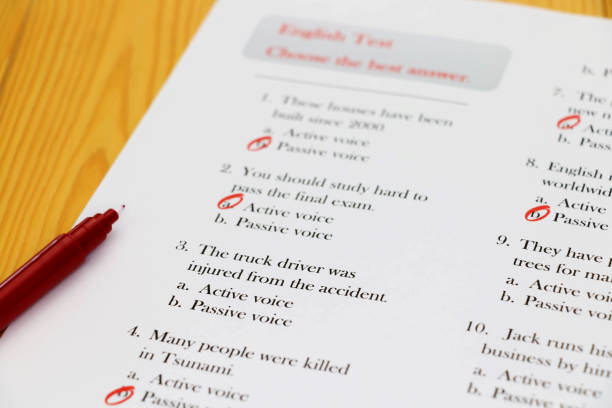Why Is My Writing Boring? 10Reasons + How To Fix It
Unraveling the mystery behind dull and uninspiring writing is an introspective journey every writer must undertake to elevate their craft.
“Why Is My Writing Boring?” is a question that echoes through the corridors of creativity, demanding a keen examination of the factors that stifle engagement. In this exploration, we delve into the subtle nuances that can turn a compelling idea into a lackluster narrative.
From the absence of a gripping hook to the subtle impact of monotonous tones and the pitfalls of passive voice, we navigate the diverse landscape of literary pitfalls that can leave readers disinterested.
Join this quest for understanding as we dissect the anatomy of boredom in writing, seeking not only to identify its roots but also to uncover the transformative strategies that breathe life into words, ensuring that every sentence captivates and resonates with readers.
Why Is My Writing Boring?
Why Your Writing May Be Boring and How to Fix It:
Lack of Engagement:
Issue: Your writing may lack engagement if it fails to connect with readers on a personal or emotional level.
Solution: Infuse your writing with relatable anecdotes, vivid descriptions, and appeal to emotions to captivate your audience.
Monotonous Tone
Issue: A monotonous tone can make your writing sound dull and uninteresting.
Solution: Vary your sentence structure, use a mix of short and long sentences, and incorporate a conversational tone to add dynamism.
Weak Structure:
Issue: Poor organization and structure can lead to a lack of coherence and clarity.
Solution: Plan your writing with a clear introduction, well-organized body paragraphs, and a strong conclusion. Use headings and subheadings to enhance readability.
Overuse of Passive Voice:
Issue: Overreliance on passive voice can make your writing seem detached and unengaging.
Solution: Opt for active voice to make your writing more direct, energetic, and engaging.
Lack of Variety in Vocabulary:
Issue: Repetitive or mundane vocabulary can contribute to boredom.
Solution: Expand your vocabulary and use a diverse range of words. Avoid unnecessary repetition and strive for precision in your language.
Ineffective Use of Descriptive Elements:
Issue: Inadequate use of descriptive elements can result in a lack of imagery and sensory appeal.
Solution: Paint a vivid picture by incorporating descriptive details, appealing to the senses, and creating a sensory-rich experience for the reader.
Failure to Address the Reader’s Needs:
Issue: Ignoring the reader’s interests or failing to provide valuable information can lead to disinterest.
Solution: Understand your audience and tailor your writing to address their needs, interests, and concerns. Provide relevant and valuable information.
Lack of Editing and Revision:
Issue: Typos, grammatical errors, and poor editing can distract the reader and diminish the overall quality of your writing.
Solution: Thoroughly edit and revise your work. Pay attention to grammar, punctuation, and clarity. Consider seeking feedback from others.
Absence of a Compelling Hook:
Issue: Failing to grab the reader’s attention from the beginning can result in disengagement.
Solution: Start with a compelling hook, whether it’s a thought-provoking question, an interesting fact, or a powerful statement. Capture the reader’s interest early on.
Failure to Convey Passion:
Issue: If you’re not passionate about your subject, it’s likely to come across in your writing.
Solution: Write about topics that genuinely interest and excite you. Infuse your writing with enthusiasm and genuine passion to make it more engaging.
By addressing these issues, you can enhance the appeal and impact of your writing, making it more interesting and engaging for your audience.

Common Reasons for Boring Writing
Writing often succumbs to the drowsy embrace of dullness for myriad reasons, transforming prose into a literary lullaby rather than a captivating journey.
One chief culprit is the feeble introduction that lacks the electric shock of a compelling hook, leaving readers stranded in a sea of monotony.
The dreary drone of a monotonous tone further compounds this literary ennui, like a never-ending rain on a monochrome landscape.
Passive voice, that silent assassin, stealthily drains life from sentences, while the relentless repetition and redundancy march forward, an army of monotony.
Yet, fear not, for within the shadows of boredom lie the keys to rejuvenation, waiting to transform lackluster writing into a vibrant symphony of words.
Lack of a Strong Hook
The absence of a robust hook in writing is akin to a ship setting sail without wind in its sails—an aimless drift that fails to captivate its passengers.
A strong hook acts as the literary handshake, the magnetic force that compels readers to dive headfirst into the narrative. Without it, the writing languishes in the realm of obscurity, unable to seize the attention of its intended audience.
Anemic introductions, lacking the punch of intrigue, leave readers adrift in a sea of indifference.
A potent hook, on the other hand, is the beacon that beckons, promising a journey worth embarking upon, ensuring that the reader willingly plunges into the depths of the narrative, eager to explore the uncharted waters of the writer’s imagination.
Monotonous Tone
The monotonous tone in writing is the stealthy assassin of reader engagement, a humdrum symphony that lulls the audience into a state of literary lethargy.
Like a monochrome landscape devoid of vibrant hues, a monotonous tone drains vitality from the prose, leaving it flat and uninspiring.
It’s the drone of a single note in a musical composition, lacking the dynamic crescendos and decrescendos that breathe life into the narrative. A writer’s palette is vast, and yet, a monotonous tone paints the canvas with a single, dull color.
Breaking free from this monotony requires a conscious effort to infuse diversity, injecting peaks of excitement, valleys of reflection, and a spectrum of emotions into the writing.
Only then can the symphony of words regain its harmony and resonate with the vibrant chords of a captivating narrative.
The impact of tone on reader engagement
The impact of tone on reader engagement is profound, akin to the conductor’s wand shaping the emotional resonance of a symphony.
It serves as the intangible bridge between the writer’s intentions and the reader’s experience, influencing the atmosphere and shaping the overall perception of the narrative.
A well-crafted tone can be a seductive whisper, drawing readers into the story with an irresistible allure, or a thunderous roar, demanding attention and provoking visceral reactions.
It establishes the emotional climate, guiding readers through peaks of excitement, valleys of contemplation, and twists of suspense. In contrast, a mismanaged tone can erect barriers, distancing readers from the intended essence of the writing.
Recognizing the potency of tone in the arsenal of storytelling is key, as it is the invisible force that forges a connection, transforming words on a page into a visceral, memorable experience for the reader.

Diversifying tone for different sections
Diversifying tone for different sections of a piece is akin to a skilled painter selecting a varied palette to evoke distinct moods across a canvas.
Each section, akin to a different brushstroke, deserves its own tonal signature, contributing to the overall harmony of the composition.
In the symphony of writing, varying tone becomes the conductor’s mastery, ensuring that the narrative experiences crescendos of excitement, tranquil interludes, and poignant reflections.
For instance, a gripping introduction may demand an authoritative or mysterious tone, while an introspective reflection benefits from a contemplative and nuanced approach.
By deliberately modulating the tone, a writer navigates the reader through the multifaceted landscape of the narrative, heightening engagement by providing a sensory and emotional diversity that mirrors the complexity of the human experience.
It’s the art of tonal versatility that transforms a written work into a dynamic and immersive journey.
Overuse of Passive Voice
The overuse of passive voice in writing is akin to a fog that shrouds the clarity and dynamism of prose, casting a veil over the directness and impact of the narrative.
Passive constructions, like specters haunting sentences, diminish the sense of immediacy and can create a detached, monotonous reading experience.
Instead of propelling the action forward, passive voice often relegates the subject to a secondary role, leading to a lack of engagement.
Writers must be vigilant in identifying instances where passive voice dominates and understand its impact on the reader’s experience.
A judicious balance, incorporating active voice for vigor and momentum, is essential to breathe life into sentences and ensure that the narrative remains vivid, compelling, and intimately connected with the reader.

How passive voice affects readability
The pervasive use of passive voice casts a subtle, yet significant, shadow over the readability of a piece of writing.
It introduces a sense of detachment, as the subject becomes the recipient rather than the doer of the action, leading to a distancing effect between the narrative and the reader. The flow of information becomes convoluted, and clarity is often sacrificed on the altar of indirectness.
Passive voice tends to bury the essential elements of a sentence, making the reader work harder to discern the intended meaning.
The result is a text that feels cumbersome and less accessible, diminishing the overall readability of the content.
In the pursuit of clarity and engagement, writers must recognize the nuances of passive voice and actively strive to infuse their prose with the vigor and directness inherent in the active voice, thereby enhancing the overall readability of their work.
Repetition and Redundancy
Repetition and redundancy in writing are the echoes that, instead of enhancing the melody, transform it into a monotonous drone.
While some repetition can be a stylistic choice, an excessive recurrence of words, phrases, or ideas within close proximity can undermine the writer’s intent and the reader’s engagement.
Redundancy, akin to unnecessary baggage, burdens the prose with superfluous details or redundant expressions, diluting the impact of the message.
Both repetition and redundancy compromise the efficiency of communication, impeding the flow and clarity of the narrative.
Writers must be vigilant editors, recognizing when to employ repetition for emphasis and when to excise redundancies, ensuring that each word contributes meaningfully to the composition.
By navigating this delicate balance, writers can create a narrative that resonates with precision and captures the reader’s attention without succumbing to the wearisome echoes of unnecessary repetition.
The negative impact of repetition on reader interest
The negative impact of repetition on reader interest is akin to an incessant drumbeat that, instead of building anticipation, becomes a dull monotony.
When words, phrases, or ideas are excessively repeated, the reader’s attention is at risk of waning. Repetition can transform the narrative into a predictable rhythm, robbing it of its freshness and surprise. Readers seek variety and stimulation, and a narrative that relies too heavily on repetition may fail to deliver the intellectual or emotional engagement they crave.
It dulls the edge of curiosity, diminishing the desire to explore further. Writers must wield repetition with precision, using it sparingly to emphasize key points or create a deliberate cadence.
By doing so, they can maintain the reader’s interest and ensure that the narrative remains a dynamic, evolving experience rather than a predictable and tiresome refrain.
Lack of Vivid Descriptions
The lack of vivid descriptions in writing is akin to presenting a black-and-white photograph in a world bursting with color.
Without the vibrant hues of descriptive language, the narrative becomes a grayscale landscape, devoid of the sensory richness that captivates readers. Vivid descriptions are the paintbrush strokes that bring scenes to life, allowing readers to taste, smell, hear, see, and feel the world the writer envisions.
When this element is neglected, the reader is denied the immersive experience that elevates a story from mere words on a page to a vivid, cinematic journey.
Writers must embrace the power of vivid imagery, employing evocative details that transport readers into the heart of the narrative, creating a tapestry of sensations that lingers in the imagination long after the reading is done.
The role of vivid imagery in captivating writing
The role of vivid imagery in captivating writing is akin to opening a window to an alternate reality, inviting readers to step into a world painted with the vivid brushstrokes of imagination.
Vivid imagery transcends the limitations of mere words, transforming abstract concepts into tangible experiences. It engages the senses, allowing readers to taste the sweetness of a ripe fruit, feel the warmth of sunlight on their skin, or hear the rustle of leaves in a gentle breeze.
Through the use of evocative details, writers not only describe but also immerse readers in the essence of their narrative, fostering a deep connection between the words on the page and the reader’s own sensory perceptions.
It is this immersive quality that breathes life into storytelling, turning it into an enchanting tapestry where readers don’t just observe but actively participate in the unfolding magic of the written world.
Incorporating sensory details for a more immersive experience
Incorporating sensory details into writing is akin to unlocking a portal to a multisensory realm, enriching the reader’s experience with a tapestry of sights, sounds, smells, tastes, and textures.
These details are the palette that colors the narrative, allowing readers to not only visualize the scenes but to feel the cool breeze on their skin, hear the symphony of rustling leaves, and taste the lingering sweetness of a ripe peach.
By appealing to the senses, writers create a bridge between the fictional world and the reader’s own lived experiences, fostering a deeper connection and a more profound sense of immersion.
Sensory details evoke emotional responses, making the narrative resonate on a visceral level, and transforming a mere story into a memorable and enchanting journey that transcends the boundaries of the written page.

Weak Transitions
Weak transitions in writing act as stumbling blocks within the narrative, disrupting the natural flow and coherence of the prose. Like a disjointed puzzle missing crucial connecting pieces, these transitions hinder the reader’s ability to seamlessly traverse from one idea to the next.
A narrative without smooth transitions is akin to a winding road with abrupt turns and potholes, making the journey jarring and less enjoyable.
These gaps in connectivity can leave readers disoriented and hinder their comprehension of the overarching narrative structure.
A skilled writer understands that transitions are the narrative glue, guiding readers through the evolving landscape of ideas with clarity and grace.
Addressing weak transitions involves crafting bridges between paragraphs and ideas, ensuring a harmonious journey for the reader and maintaining the seamless progression essential for a compelling and coherent narrative.
Strategies to Enhance Writing Engagement
Elevating writing engagement is akin to orchestrating a literary dance that captivates the mind and soul. One potent strategy is to infuse the narrative with the electric pulse of vivid language, painting scenes that not only tell a story but allow readers to taste the richness of each word.
Engaging writing also embraces the art of surprise, daring to defy expectations with unexpected twists and turns that jolt the reader out of complacency. Dialogues become dynamic exchanges, not mere exchanges of words but glimpses into the characters’ souls.
Crafting an immersive experience requires the strategic use of pacing, as a well-timed rhythm propels the reader forward with eager anticipation.
Finally, the judicious application of suspense acts as the clandestine hand that tugs at the reader’s curiosity, enticing them to turn each page with a voracious hunger for what lies ahead.
These strategies, woven together, transform writing into a vibrant tapestry that ensnares the imagination and leaves readers spellbound in the magic of a well-crafted narrative.
Utilizing Descriptive Language
Unlocking the potential of descriptive language is akin to discovering a treasure trove of literary jewels that can transform mundane words into a vivid symphony of sensations.
Descriptive language is the artisan’s palette, allowing writers to paint intricate pictures with words. It’s not just about conveying information but about immersing readers in a sensory experience, inviting them to feel the warmth of sunlight on their skin, hear the whispers of a gentle breeze, and see the world through the protagonist’s eyes.
Each carefully chosen adjective, each evocative metaphor, becomes a brushstroke, contributing to the detailed tapestry that envelops the narrative.
In the hands of a skillful writer, descriptive language transcends mere storytelling, creating a visceral connection between the words on the page and the reader’s imagination, thus transforming the act of reading into a vivid and unforgettable journey.
Creating Dynamic Characters and Settings
Crafting dynamic characters and settings is the alchemy that turns a narrative into a living, breathing world that pulses with authenticity.
Characters cease to be mere ink on paper; they become complex individuals with quirks, aspirations, and flaws that resonate with the reader.
Dynamic characters evolve, facing challenges that reveal the depths of their personalities and create a profound emotional investment. Similarly, settings are not just backdrops but immersive landscapes that shape the narrative’s tone and atmosphere.
Whether it’s a bustling cityscape or a serene wilderness, a well-crafted setting becomes a silent character, influencing the plot and characters in profound ways.
The synergy between dynamic characters and vivid settings forms the heartbeat of storytelling, propelling readers into a realm where the lines between fiction and reality blur, and every turn of the page brings forth a new revelation or adventure.
Varying Sentence Structure
Varying sentence structure is the symphony conductor’s wand in the realm of writing, orchestrating a harmonious melody that keeps the reader’s attention dancing.
Just as a musical composition relies on diverse notes and rhythms to maintain interest, a well-crafted narrative thrives on a mosaic of sentence structures. Short, crisp sentences provide impact and urgency, while longer, flowing ones invite readers to savor the prose.
Strategic use of questions, exclamations, and declarative statements adds a dynamic cadence, preventing monotony from settling in.
The ebb and flow of varied sentence structures not only sustains the reader’s engagement but also imbues the writing with a rhythmic energy, transforming it into a literary dance that captures attention and ensures that each sentence contributes to the larger, cohesive narrative tapestry.

The impact of varied sentence structure on pacing
Varied sentence structure serves as the conductor of pacing in the grand symphony of writing, dictating the rhythm that guides readers through the narrative journey.
Like a dynamic tempo in music, the interplay of short, punchy sentences accelerates the pace, infusing urgency and excitement into critical moments. Conversely, the languid grace of longer, more intricate sentences slows the pace, allowing readers to linger in contemplative moments or absorb nuanced details.
This deliberate manipulation of sentence structure is the literary throttle, regulating the speed at which the story unfolds.
By weaving together sentences of different lengths and structures, writers can control the ebb and flow of tension, creating a narrative cadence that mirrors the rise and fall of waves, ensuring readers remain entranced by the unpredictable, yet carefully orchestrated, pacing of the tale.
Techniques for incorporating different sentence types
Mastering the art of incorporating different sentence types is akin to wielding a diverse set of brushes on the canvas of language, creating a symphony of expression.
Simple sentences, direct and to the point, provide clarity and impact, while compound sentences interconnect ideas with a graceful fluidity.
Complex sentences, enriched with subordinate clauses, allow for the exploration of intricate relationships between concepts.
Writers can amplify emphasis through the strategic use of short, declarative sentences or inject a rhythmic cadence using longer, flowing constructions. Employing questions, exclamations, and rhetorical flourishes adds further layers to the tapestry of expression.
By seamlessly weaving together this array of sentence types, writers infuse their prose with a dynamic quality, ensuring that the narrative unfolds with both precision and artistry, captivating readers through the sheer versatility and richness of language.
Incorporating Dialogue Effectively
Incorporating dialogue effectively is the literary alchemy that transforms characters from mere words on a page into vibrant, living entities with distinct voices and personalities.
Dialogue serves as the pulsating heartbeat of a narrative, breathing life into interactions and allowing readers to eavesdrop on the authentic cadence of human expression.
Effective dialogue not only advances the plot but also reveals the nuances of characters’ relationships, motivations, and conflicts. It’s the subtle art of capturing the essence of spoken language, infusing conversations with authenticity and resonance.
Well-crafted dialogue balances exposition with subtext, providing a window into characters’ thoughts and emotions without explicitly stating them.
By mastering the art of dialogue, writers create a symphony of voices that resonates with readers, drawing them deeper into the narrative and forging an intimate connection with the characters they encounter on the written stage.
Editing for Conciseness and Clarity
Editing for conciseness and clarity is the meticulous sculpting of language, refining the raw material of words into a polished masterpiece.
It’s the art of distillation, where every sentence serves a purpose, and each word contributes to the narrative with precision. Concise writing doesn’t sacrifice depth; rather, it trims away the excess, leaving behind a narrative that is streamlined, impactful, and effortless to navigate.
Clarity, the twin objective, ensures that the writer’s message is crystal clear, avoiding ambiguity and unnecessary complexity. It involves scrutinizing sentences for redundancy, eliminating jargon, and honing the prose until it gleams with lucidity.
The edited result is a narrative that doesn’t just communicate but does so with elegance and efficiency, inviting readers into a world where every word counts and clarity reigns supreme.
Case Studies
Case studies are the intriguing detective stories of the literary world, unraveling the mysteries of real-world scenarios with the meticulousness of a forensic investigator.
Each case study is a narrative expedition, delving into the intricate details of challenges faced and conquered, failures dissected, and successes celebrated.
It’s an immersive experience, a journey that readers embark upon to explore the twists and turns of practical applications and the unpredictable outcomes that emerge.
Case studies are not mere documentation; they are living stories that bridge theory and reality, inviting readers to become active participants in the narrative.
They transform the abstract into the tangible, offering valuable insights and lessons in a storytelling format that turns every case into a gripping tale of triumph, tragedy, and, most importantly, knowledge.
Analysis of boring writing samples
Embarking on an analysis of boring writing samples is akin to a literary autopsy, dissecting the lifeless prose to uncover the root causes of its lackluster impact.
It involves scrutinizing the flat landscapes of uninspired language, identifying the missing hues of vibrant expression, and unraveling the tangled threads of monotony that have ensnared the reader’s interest.
The examination is not a mere critique but a quest to unveil the subtle culprits—be it the absence of a compelling hook, the monotonous tone, or the overuse of passive voice.
Through this dissection, writers gain valuable insights into the anatomy of boredom, arming themselves with the knowledge needed to breathe life into their own narratives and ensure that the pulse of engagement beats vigorously on every page.

Transformation of boring passages into engaging content using outlined strategies
The transformation of boring passages into riveting content is akin to orchestrating a literary metamorphosis, where words evolve from mundane to magnetic.
Armed with the strategies outlined, writers embark on a journey of rejuvenation, infusing the narrative with compelling hooks that arrest attention from the outset.
Monotonous tones are replaced with dynamic cadences, and the shackles of passive voice are shattered to unleash the vitality of active expression.
The surgeon’s precision is applied to excise redundancy, while the artist’s brush sweeps in to paint vivid descriptions that beckon readers into a world bursting with sensory richness.
Through this strategic alchemy, the once lackluster prose is reborn, capturing the imagination with the promise of an engaging narrative that resonates long after the transformation is complete.
Frequently Asked Questions (FAQ) about Why Is My Writing Boring?
Why does my writing sometimes come across as boring?
Writing can lose its spark due to various reasons, such as the lack of a compelling hook, monotonous tone, or overreliance on passive voice. Identifying these elements is crucial to understanding the root causes of boredom in your writing.
How does the absence of a strong hook impact reader engagement?
Without a captivating introduction, readers may struggle to find a compelling reason to continue. A strong hook serves as the literary invitation, drawing readers into your narrative and setting the tone for an engaging journey.
What role does tone play in making writing boring?
Monotonous tones can dull the vibrancy of prose, making it less engaging. Varied tones, on the other hand, infuse energy and emotion, capturing the reader’s attention and sustaining interest throughout the narrative.
How does passive voice affect the readability of my writing?
Overusing passive voice can make sentences convoluted and less engaging. Active voice, by contrast, provides clarity and a directness that enhances readability.
Can repetition really make writing boring?
Yes, excessive repetition, whether of words or ideas, can create monotony and diminish reader interest. Strategic use of repetition for emphasis is essential, but too much can lead to a lackluster reading experience.
What strategies can I employ to fix boring writing?
Transforming boring writing involves incorporating vivid descriptions, varying sentence structures, and utilizing dynamic characters and settings. Editing for conciseness and clarity is also crucial. By adopting these strategies, you can breathe life into your writing and captivate your audience.
Conclusion
In unraveling the mystery of why writing sometimes falls into the abyss of boredom, we have explored the intricacies that can transform a narrative from lackluster to captivating.
From the importance of a compelling hook to the impact of tone, passive voice, and the pitfalls of repetition, we’ve navigated the landscape of potential stumbling blocks.
However, armed with the transformative strategies discussed—incorporating vivid descriptions, varying sentence structures, and editing for conciseness and clarity—writers can emerge from the shadows of monotony.
This exploration is not merely an analysis but a guide, offering insights and solutions to rejuvenate the craft.
In the realm of storytelling, the journey from boredom to brilliance is not just an endeavor—it’s an invitation to infuse words with life, ensuring that each sentence captivates, resonates, and leaves an indelible mark on the reader’s imagination.






